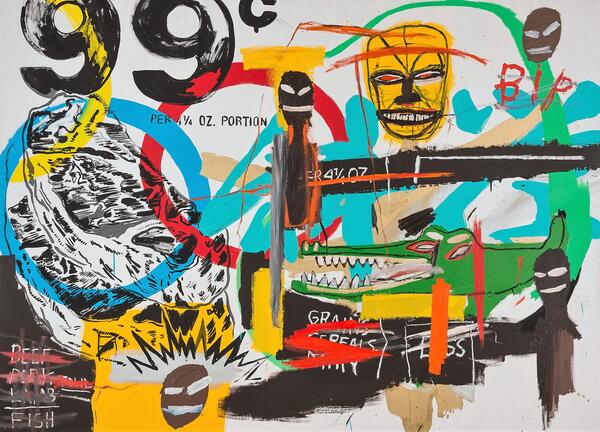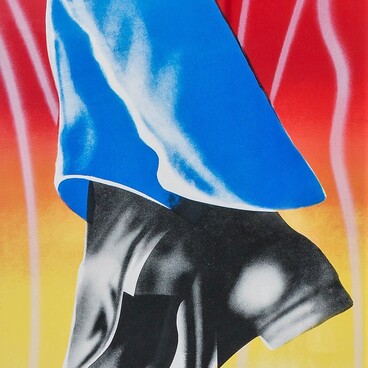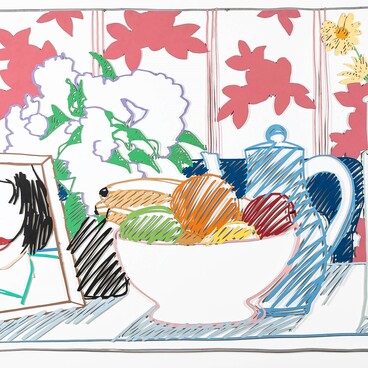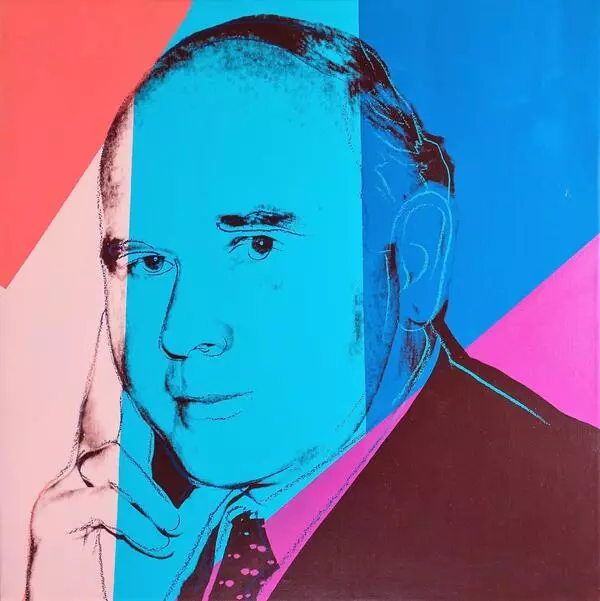The Russian Museum houses a painting created in 1984 by two American artists — Jean-Michel Basquiat and Andy Warhol.
Jean-Michel Basquiat (1960–1988) was one of the most famous painters and graffiti artists of the second half of the 20th century. He was born and raised in New York. His works revolved around the themes of the big city, as well as “kings, heroes and the street.”
Basquiat’s paintings turned the megapolis into a mythical stage where good and evil, new technologies and ancient rituals collided. The artist combined classical art images with characters and attributes of African American culture — famous boxers, jazz musicians and spiritual leaders, ritual masks, graffiti, various mass culture logos and stamps. Basquiat’s works also reflected his disapproval of imperialism, racism and inequality.
Jean-Michel Basquiat became famous when he was still alive. Together with artists Julian Schnabel, David Salle and Francesco Clemente, he was part of the New York Neo-expressionism movement. It is a style of modern art, which favors vivid colors and an impulsive broad manner of painting, as well as urban motifs, including the ones of New York.
Basquiat met Andy Warhol in 1980, but the two did not start working together right away. In 1983, an art dealer Bruno Bischofberger invited graffiti artist Basquiat, Italian Transavantgarde artist Francesco Clemente and representative of Pop Art Andy Warhol to work together. Each of them painted a part of the canvas to then pass it to another. The resulting work was presented at an exhibition at the Bischofberger Gallery.
After that, Basquiat and Warhol continued their collaboration. The painting presented in the Ludwig Museum was created a year after, in 1984. The left part showing a hamburger with the indication of its weight and price of 99 cents was painted by Warhol. Basquiat did the rest — brightly colored stripes and images reminiscent of exotic figures and masks allude to the prehistoric ideas of magic.
The bright and vivid painting combines different styles and traditions, just like New York — a city known as the “melting pot of nations and cultures.”
Jean-Michel Basquiat (1960–1988) was one of the most famous painters and graffiti artists of the second half of the 20th century. He was born and raised in New York. His works revolved around the themes of the big city, as well as “kings, heroes and the street.”
Basquiat’s paintings turned the megapolis into a mythical stage where good and evil, new technologies and ancient rituals collided. The artist combined classical art images with characters and attributes of African American culture — famous boxers, jazz musicians and spiritual leaders, ritual masks, graffiti, various mass culture logos and stamps. Basquiat’s works also reflected his disapproval of imperialism, racism and inequality.
Jean-Michel Basquiat became famous when he was still alive. Together with artists Julian Schnabel, David Salle and Francesco Clemente, he was part of the New York Neo-expressionism movement. It is a style of modern art, which favors vivid colors and an impulsive broad manner of painting, as well as urban motifs, including the ones of New York.
Basquiat met Andy Warhol in 1980, but the two did not start working together right away. In 1983, an art dealer Bruno Bischofberger invited graffiti artist Basquiat, Italian Transavantgarde artist Francesco Clemente and representative of Pop Art Andy Warhol to work together. Each of them painted a part of the canvas to then pass it to another. The resulting work was presented at an exhibition at the Bischofberger Gallery.
After that, Basquiat and Warhol continued their collaboration. The painting presented in the Ludwig Museum was created a year after, in 1984. The left part showing a hamburger with the indication of its weight and price of 99 cents was painted by Warhol. Basquiat did the rest — brightly colored stripes and images reminiscent of exotic figures and masks allude to the prehistoric ideas of magic.
The bright and vivid painting combines different styles and traditions, just like New York — a city known as the “melting pot of nations and cultures.”




